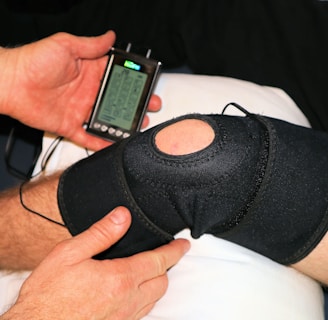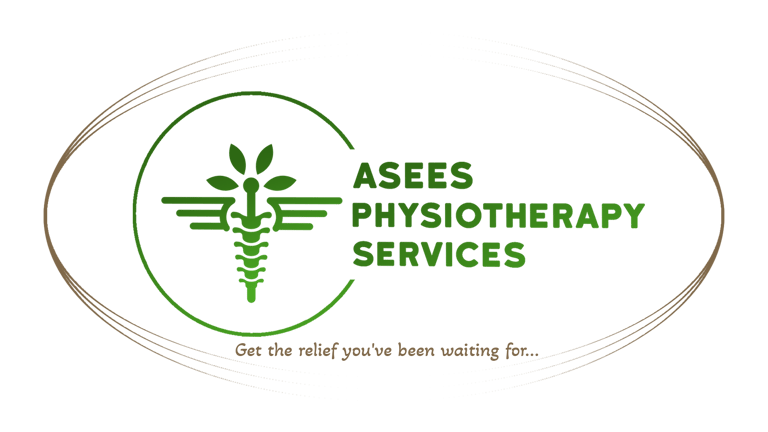IFT Therapy Explained: How It Helps in Treating Muscle and Joint Pain
Used globally by physiotherapists and pain management specialists, IFT therapy is a scientifically backed, non-invasive treatment method that targets pain, inflammation, and muscular stiffness. In this article, we’ll break down exactly what IFT therapy is, how it works, and why it’s becoming a preferred choice for those seeking long-term relief from pain—particularly in physiotherapy clinics like Asees Physio.
Dr, Karamjeet
6/26/20254 min read


Living with persistent muscle or joint pain can be both physically exhausting and emotionally draining. While medications may offer temporary relief, they rarely address the root cause of the issue. This is where physiotherapy and, more specifically, IFT therapy (Interferential Therapy) comes into play.
Used globally by physiotherapists and pain management specialists, IFT therapy is a scientifically backed, non-invasive treatment method that targets pain, inflammation, and muscular stiffness. In this article, we’ll break down exactly what IFT therapy is, how it works, and why it’s becoming a preferred choice for those seeking long-term relief from pain—particularly in physiotherapy clinics like Asees Physio.
What Is IFT Therapy?
Interferential Therapy (IFT) is a form of electrotherapy that uses low-frequency electrical currents to stimulate nerves, muscles, and tissues deep within the body. Unlike basic electrical stimulation tools, IFT penetrates further and targets the affected area with higher precision and greater comfort.
IFT therapy is primarily used in:
Pain management
Reducing inflammation and swelling
Promoting soft tissue healing
Restoring mobility and muscle function
IFT machines generate two high-frequency signals that intersect within the body tissues, creating a therapeutic low-frequency current that reduces pain and enhances blood flow without discomfort.
How Does IFT Therapy Work?
IFT therapy works on the principle of interference. It involves the use of two medium-frequency electrical currents (around 4000 Hz), which intersect within the body's tissues. When these currents interact, they create a low-frequency stimulation (usually around 100 Hz or less), which is more effective and comfortable than other electrical modalities like TENS.
This interference current:
Stimulates sensory nerves to block pain signals from reaching the brain
Enhances circulation to promote healing
Reduces muscle spasms and stiffness
Accelerates the removal of metabolic waste from injured tissues
Unlike other electrotherapy methods that can feel uncomfortable, IFT delivers a soothing and gentle experience that makes it easier for patients to relax during treatment.
Conditions That Can Be Treated With IFT Therapy
IFT therapy is highly versatile and is used to treat a variety of musculoskeletal and neurological conditions, such as:
Back Pain (Upper & Lower)
Cervical Spondylosis and Neck Stiffness
Sciatica and Nerve Root Irritation
Osteoarthritis and Rheumatoid Arthritis
Tennis Elbow and Golfer’s Elbow
Knee Joint Pain and Ligament Injuries
Frozen Shoulder and Rotator Cuff Injuries
Post-Surgical Swelling and Pain
Sports Injuries and Repetitive Strain Injuries
At advanced physiotherapy clinics like Asees Physio, IFT therapy is often used in combination with manual therapy, stretching routines, and other advanced modalities to deliver a comprehensive healing experience.
What Happens During an IFT Therapy Session?
A typical IFT therapy session is simple, painless, and usually takes 15 to 30 minutes. Here’s what to expect:
Initial Assessment
Your physiotherapist will examine the pain area, assess your range of motion, and ask about your symptoms and medical history.Electrode Placement
Small adhesive pads (electrodes) are placed around the pain area. These are connected to the IFT machine.Adjustment of Settings
The therapist sets the frequency, intensity, and duration of the electrical impulses depending on your condition and pain threshold.Stimulation Begins
You will feel a gentle tingling sensation as the current passes through your skin and deep into the tissues. It’s not painful—in fact, many patients find it soothing.Post-Therapy Review
Your therapist may perform some stretching or mobility exercises post-treatment and advise you on home care or follow-up.
Key Benefits of IFT Therapy
IFT therapy offers a wide range of therapeutic benefits:
1. Fast Pain Relief
One of the most significant advantages of IFT therapy is its ability to provide rapid relief from acute and chronic pain by blocking the pain signals at the nerve level.
2. Reduces Inflammation and Swelling
It increases local blood flow and helps remove toxins and fluids that cause swelling in the tissues.
3. Stimulates Tissue Healing
Enhanced blood flow promotes faster regeneration of damaged muscles, ligaments, and tendons.
4. Improves Joint Mobility and Function
Regular IFT therapy sessions can reduce stiffness and improve your range of motion—especially beneficial for arthritis patients.
5. Painless and Comfortable
Unlike deep tissue massages or certain manual therapies, IFT is non-invasive and generally free of discomfort.
6. Complements Other Treatments
IFT works well in conjunction with physical therapy exercises, manual therapy, and even medications (if prescribed by a physician).
Who Should Consider IFT Therapy?
IFT therapy is ideal for individuals who:
Prefer drug-free treatment
Have conditions that haven’t responded to conventional therapies
Need post-operative rehabilitation
Suffer from recurring muscle or joint stiffness
Are seeking alternatives to corticosteroid injections or surgery
It’s also suitable for elderly individuals, office workers with sedentary lifestyles, and athletes recovering from injuries.
Are There Any Side Effects?
IFT therapy is considered very safe when administered by a trained physiotherapist. Most patients report a pleasant sensation during and after the session.
However, it may not be suitable for:
People with pacemakers or heart conditions
Pregnant women (especially in the abdomen or lower back areas)
Individuals with open wounds or skin infections at the site of electrode placement
Always disclose your full medical history before starting treatment to ensure your safety.
Why Choose Asees Physio for IFT Therapy?
Asees Physio is one of the leading physiotherapy clinics in the region offering IFT therapy in both Chandigarh and Kharar. Here’s what sets us apart:
Expert Team – Our certified physiotherapists specialize in pain management and post-injury rehab.
Modern Equipment – We use high-quality IFT machines that are precise, effective, and safe.
Custom Care Plans – Each therapy session is tailored to your condition, recovery goals, and comfort level.
Home Therapy Option – We also offer IFT therapy at home for patients who cannot travel due to mobility or health concerns.
Whether you're suffering from long-standing neck pain, recovering from ligament injury, or dealing with arthritis, Asees Physio ensures that your IFT therapy journey is both effective and comfortable.
Frequently Asked Questions (FAQs)
Q1: How many IFT sessions will I need?
A: Depending on the severity of your condition, anywhere from 5 to 15 sessions may be recommended for optimal results.
Q2: Can IFT therapy cure my condition?
A: While it may not be a cure, it can significantly reduce pain and enhance recovery when part of a comprehensive physiotherapy plan.
Q3: Is IFT therapy covered under insurance?
A: Some health insurance policies cover physiotherapy, including IFT. Check with your provider for details.
Conclusion
IFT therapy is a powerful, pain-free, and highly effective treatment option for a wide range of musculoskeletal and neurological conditions. It’s especially beneficial for patients seeking fast relief without resorting to medication or invasive procedures.
If you’re suffering from persistent joint or muscle pain, don’t wait. Book your IFT therapy session at Asees Physio today—Chandigarh and Kharar’s trusted destination for advanced physiotherapy care. Let us help you reclaim a pain-free, active life.
